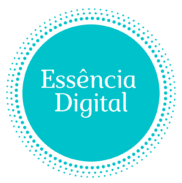The Instagram feed sells a beautiful lie: a laptop open on a perfect beach, a carefree professional sipping a coconut, typing a few lines between dips in the ocean. While moments like these exist, the day-to-day reality of a successful digital nomad is far less about spontaneous adventures and far more about disciplined routine. This is the great productivity paradox of the nomadic lifestyle: the very freedom you seek is only sustainable through the structure you create.
Many new nomads make the mistake of either abandoning routine altogether, leading to burnout and missed deadlines, or trying to rigidly import their old 9-to-5 schedule into a constantly changing environment. Both paths lead to frustration. The key to long-term success isn’t about having a strict, unbreakable schedule. It’s about building a resilient, flexible routine a framework that provides stability without sacrificing the freedom that defines this lifestyle.
This article will guide you through crafting a nomadic routine that works with you, not against you, allowing you to stay productive, balanced, and ready for whatever your journey throws your way.

Why the Corporate 9-to-5 Mindset Fails on the Road
The first step is to unlearn what you know about a “normal” workday. The 9-to-5 structure was designed for a static environment with predictable variables. As a nomad, your variables are always in flux: time zones, Wi-Fi reliability, co-working space availability, and the irresistible pull of exploring a new city.
Trying to force a rigid 8-hour block of work into this dynamic lifestyle is a recipe for failure. You’ll feel guilty for taking a sunny afternoon to explore a local market or stressed when a weak internet connection disrupts your scheduled video calls. The goal isn’t to replicate your old office life; it’s to build something new that’s tailor-made for a life in motion.
The 4 Pillars of a Flexible Nomadic Routine
A resilient routine is built on pillars, not walls. These pillars provide support and direction while allowing for the ebb and flow of travel.
Pillar 1: Anchor Habits – Your Non-Negotiables
Anchor habits are small, consistent actions that ground your day, no matter where you are in the world. They are the non-negotiables that signal to your brain that it’s time to focus or time to wind down. They shouldn’t be complicated.
- Morning Anchor: This could be as simple as making your own coffee before checking your phone, a 10-minute journaling session, or a short walk to find the best local pastry. It’s about starting the day on your terms.
- Evening Anchor: This signals the end of the workday. It might be closing your laptop and immediately changing clothes, a 15-minute “brain dump” to plan the next day, or listening to a specific playlist. This creates a clear boundary between work and personal time, which is crucial when your “office” is also your living space.
Pillar 2: Time Blocking, Not Time Scheduling
This is a subtle but powerful distinction. Instead of scheduling tasks at specific times (e.g., “10:00 AM: Write blog post”), you block out chunks of time for specific types of work. This provides structure while giving you the flexibility to choose what to work on based on your energy and priorities.
A typical day might look like this:
- 9 AM – 12 PM: Deep Work Block. Reserved for your most mentally demanding tasks. No emails, no social media.
- 12 PM – 2 PM: Lunch & Exploration Block.
- 2 PM – 4 PM: Admin & Communication Block. For emails, calls, and smaller tasks.
- 4 PM onwards: Personal Time.
Pillar 3: The “Work-First” vs. “Explore-First” Day
Embrace the freedom to design your days differently. Some days, your focus will be work. On others, it will be the location.
- The Work-First Day: Ideal for deadline days or when you have high creative energy. You wake up, execute your morning anchor, and jump straight into your Deep Work block. You finish your tasks efficiently, freeing up the rest of the day for guilt-free exploration.
- The Explore-First Day: Perfect for a new city or when you’re feeling uninspired. Spend the morning sightseeing, visiting a museum, or hiking. You’ll return to your laptop in the afternoon feeling refreshed, creatively recharged, and ready to tackle your Admin & Communication block.
Pillar 4: Your Digital Toolkit for Consistency
The right technology can help you maintain your routine without adding complexity.
- Project Management: Tools like Trello, Asana, or Notion help keep your tasks organized, so you know exactly what to focus on during your “Deep Work” block.
- Communication: Clearly define your availability on Slack or email. Use a tool like Calendly to let clients book calls during your “Communication” block, respecting your time zone.
- Focus Apps: Use apps like Forest or Freedom to block distracting websites during your Deep Work sessions, ensuring you make the most of that precious time.
How to ‘Reset’ Your Routine in a New Location
Arriving in a new city can easily throw your routine into chaos. Use the first 72 hours strategically to set yourself up for success.
- Day 1: Settle & Scout. Focus on the basics. Unpack, find the nearest grocery store, and take a walk to identify potential cafés or co-working spaces. Don’t force work today.
- Day 2: Test & Plan. Visit your top café choice and test the Wi-Fi. Do a light work session—perhaps your “Admin” block. Map out your anchor habits in this new context. Where will you go for your morning walk?
- Day 3: Full Launch. With the logistics sorted, it’s time to fully implement your routine, starting with your morning anchor and first Deep Work block.
Beyond Productivity: A Routine for Well-being
Finally, remember that a good nomadic routine is about more than just getting work done. It’s a critical tool for mental health and sustainability. It provides a sense of stability in an unstable environment, helps prevent decision fatigue, and ensures you carve out time for socializing and self-care, which are essential for combating the loneliness that can sometimes accompany this path.
The ultimate goal isn’t to control every minute of your day. It’s to create a resilient framework that empowers you to do great work, immerse yourself in new cultures, and build a truly sustainable life of freedom and purpose.
… Building Connection Across Borders: Empathy and Feedback for Digital Nomads …

